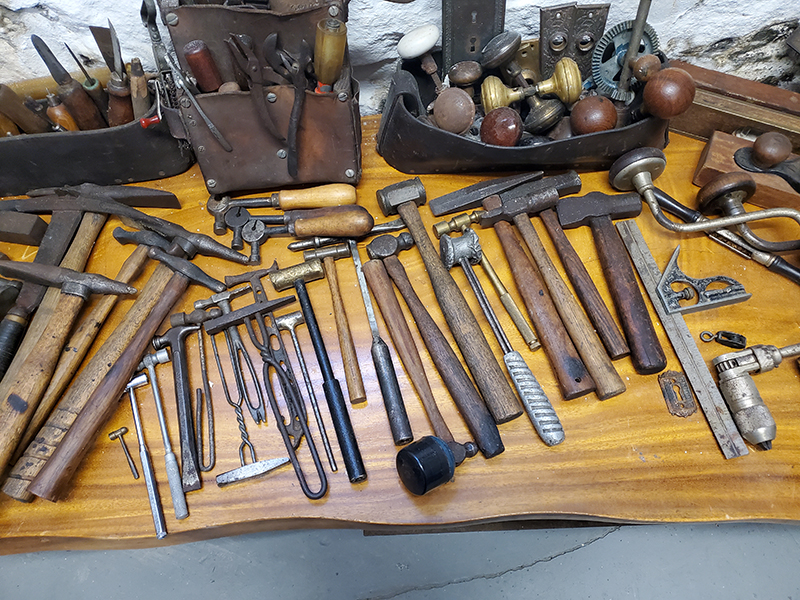Evansdale Library displaying unique hammer collection
Posted by Monte Maxwell.January 30th, 2023

As part of West Virginia University Libraries’ Art in the Libraries series of exhibits of personal collections, Frankie Tack, Clinical Associate Professor in Counseling and Well-Being, shares a selection of the most common tool in the world, the hammer, in a display at Evansdale Library.
Tack’s collection of over 100 hammers ranges from a pre-colonial Native American hammer stone to hammers used by jewelers, cobblers, coopers, clockmakers, blacksmiths, masons, shipwrights, farriers, and even cigar smokers and, of course, an array of standard claw hammers from the 19th century to present.
The collection began when Tack came into possession of her father-in-law’s tools after his death. He was a farmer and a loom fixer in textiles when we still had those plants in the U.S. The collection, she soon found, also included his father’s tools.
“That man had been a carpenter and actually built the house that my wife grew up in,” said Tack. “His tools were amazing and knowing that they built the family home was priceless. I was hooked!”
Tack continued: “The hammers hold so much visual history: you can see the crafting and pounding they were used for, the little accidents, the repairs, and the personalization (carved initials, names, or a hand grip). The wood is amazing. They built and sustained America. And there are so many types, from those we still use today, such as the standard hammer to drive a nail, ball peen hammers, and roofing hammers, to types rarely now needed, such as cobbler’s hammers and blacksmithing hammers. My main sources are antiques stores, estate auctions, and ‘junk’ stores.”
The exhibit also includes a brief history of the hammer, a history of See’s Candy (the collection includes some See’s candy hammers) and a selection of hammers in art display panels.
The exhibit will remain on display through June.






February 6th, 2023 at 12:58 pm
The article says that the collection includes hammers from the late 1800s to the early 1900s. However, some of the hammers in the display appear to be from the mid-20th century. Additionally, the article says that the collection was donated by Charles Evans. However, the sign next to the display says that the collection was donated by the Evans family. Hello, I noticed that the article says that the Evansdale Library hammer collection includes hammers from the late 1800s to the early 1900s. However, some of the hammers in the display appear to be from the mid-20th century. Additionally, the article says that the collection was donated by Charles Evans. However, the sign next to the display says that the collection was donated by the Evans family. I suggest changing the date range to reflect the mid-20th century, and changing the donor from Charles Evans to the Evans family. Thank you for your time.